While it is possible to draw many parallels between the US and Australia’s muscle car scenes, much of what drove the market Down Under was motivated by motorsport success. Nowhere is this better encapsulated than in this 1977 Holden Torana A9X Hatchback. Not only does it have a rich racing pedigree, but it offers potential buyers the opportunity to own what is a genuine Holden factory race car. It is also a car that has the potential to sell for a seven-figure sum at auction. If you have that sort of loose change kicking around, you will find the Torana listed online here at Lloyds Auctioneers. Bidding is currently sitting at a cool A$755,000.
During the early days of the Australian muscle car era, there were three leading players. Ford kicked things off when it released the Falcon XR GT in 1967. Chrysler and General Motors (Holden) followed shortly afterward, and the battle became intense between these three. By 1973, all had potent muscle cars in the works, but a newspaper article by journalist Evan Green revealed that soon buyers would have access to road cars capable of topping 160mph. Political pressure was brought to bear, and what became known as the “Supercar Scare” saw all of these models scrapped. The motivation behind them was pretty simple. Ford, Holden, and Chrysler all saw huge marketing benefits in winning the coveted long-distance race conducted annually at the Mount Panorama Circuit at Bathurst in New South Wales. At the time, the competition was open to Production Touring Cars, and the rules were fiercely policed. Basically, if a vehicle didn’t roll off the production line with a specific component, then it wasn’t allowed on the race car. Following the uproar over the supercars, the race regulations were changed to what became known as Group C Improved Production. This rule allowed some flexibility in the areas of wheels, tires, suspension, and engine modifications. It meant that manufacturers could produce less potent cars, and race teams could add the “go faster” components. That is where our feature car fits into the equation. Holden introduced a new Torana in 1974 with the model designation of LH. This was an all-Australian design and was the first Torana to be made available with a V8 engine. A high-performance version called the L34 was released, which provided the foundations for the racing efforts from 1974 until 1976. The L34 brought some engine upgrades, along with front and rear spoilers and fender flares to accommodate wider racing wheels and tires. A face-lift in 1976 brought the LX model and also saw the Torana available with a Hatchback body. In 1977, a performance variant called the A9X was introduced. This was available in both a 4-door sedan and Hatchback. As well as the fender flares and front spoiler that had adorned the L34, it brought an updated rear spoiler and a reverse bonnet scoop. Most examples of the A9X found their way onto Australian roads, while quite a few were built into race cars. This Torana was purpose-built as a race car back in 1977. Construction was carried out by the factory Holden Dealer Team, under the supervision of the then Team Manager, Harry “The Fox” Firth. It saw active front-line competition between 1977 and the end of 1979. Rule changes that came into force from the start of 1980 saw the A9X outlawed in its original form, and most teams sold their cars. This one passed through several owners’ hands, but all of the documentation exists to confirm its authenticity. It has been restored to its original Marlboro HDT livery, and it presents perfectly. The limited use and exposure to the elements that it has had means that there are no rust problems, while the panels and paint appear perfect. It wears the correct 10″ wide alloy racing wheels, and several spare wheels are included in the sale. There are also a few additional body parts, including a replacement front spoiler.
Group C Improved Production did bring with it many compromises, and nowhere is this more evident than when you look at this Torana’s interior. Essentially, the interior configuration had to remain stock, and all of the interior trim had to stay intact. How often do you see a front-line race car with door trims and carpet? They weren’t there for comfort, but because the rules demanded it. Holden chose to remove a few creature comforts from the standard Torana during production, so there is no console and no radio. Group C regulations allowed teams to fit racing front bucket seats if the car had come equipped initially with bucket seats. If a bench seat was how it left the factory, then that’s what you were stuck with! A roll-cage was mandatory, but the design was free. The factory gauge cluster could be removed, and a more appropriate set of gauges could be substituted. The interior of this Torana features those changes, and its condition is good for a classic of this age. The dash was autographed by the late Harry Firth, a legend of Australian motor racing. As well as winning multiple Bathurst races as a driver, Firth variously oversaw both Ford’s and Holden’s factory racing operations at different times. He was a man who knew the rulebook backward and was famously quoted as saying, “You can bend the rules, but you can’t break them.” His team built this car, and he quietly retired at the end of 1977. That also makes it one of the last race cars that he created. The other signature on the dash is that of John Harvey. Starting his racing life as a dirt-track competitor, Harvey became the car’s primary driver from 1977 until the end of 1979. Not only did he win a Bathurst race in 1983, but he also went on to win the first round of the 1987 World Touring Car Championship at Monza in Italy.
While the basic engine configuration for a Group C touring car had to remain intact, there were certain allowable modifications. The engine block, cylinder heads, and intake all had to be production items. However, conrods, pistons, camshafts, conrods, exhaust systems, and valves could be changed. However, the engine capacity could not be altered, meaning that over-boring an engine was not allowed. What we find under the hood of the A9X is the Australian-developed 308ci V8. When it rolled off the production line, this engine would have been producing around 220hp. Teams changed camshaft grinds, and usually fitted steel crankshafts, along with better conrods and pistons. An adaptor was bolted to the intake, and teams traditionally installed either a Holley or a brace of Weber carburetors. Headers and a low restriction exhaust got rid of spent gases, and all of this boosted engine power to somewhere just over 400hp. In standard form, the engine power would find its way to the rear wheels via an M21 transmission, but the optional T-10 was fitted for racing duties. As well as the Hatchback body, the A9X brought two notable changes to the table. The first was the reverse bonnet scoop. On road-going examples, this has a blanking plate in the hood to prevent rain from finding its way into the engine bay. This plate was removed for racing purposes, allowing the engine to suck in tremendous amounts of cold, dense air from the area around the cowl. Even bigger news revolved around the rear end. When the V8 Torana was introduced, it featured a “banjo” rear end that dated back more than a decade. It was designed to withstand the sorts of horsepower produced by a basic 6-cylinder engine. The V8 Torana placed enormous strain on this, and racers had to be delicate with their right foot, or they would soon find themselves with broken axles. The A9X addressed that issue by featuring a far more robust 10-bolt rear end with stronger axles. The other Achille’s Heel of the V8 Torana had been brakes. The standard configuration was front discs/rear drums. The A9X saw 4-wheel discs appear for the first time. This car retains all of its racing hardware, and it is a turn-key proposition for prospective buyers. It could be used for historic competition work or historic or promotional displays.
Included with the A9X is a treasure-trove of parts. These include several different rear end gear sets, a couple of spare T-10 transmissions, filters, belts, brake components, plus numerous other items. There is also a comprehensive set of documents verifying the car’s history, along with John Harvey’s race helmet and boots from the era, a Marlboro HDT team jacket, and various other items.
History is about to close the book on Holden. General Motors took the decision earlier this year to “retire” the Holden name and badge. By the time the calendar turns over the New Year, Holden will no longer exist. It will be a sad end for a brand that has been steeped in motorsport history. The A9X comes from an extraordinary era in Australian motorsport, and it represents a car built by a company at the height of its power. Finding an A9X with a documented racing history is a rare treat. Finding a genuine factory race car is something akin to finding the Holy Grail. Will the bidding get to $1,000,000? I wouldn’t be at all surprised. Is this an investment that will appreciate in the coming years? Almost certainly. I hope that whoever buys it takes it out for a gallop every now and then. It doesn’t deserve to be locked away in a museum. After all, it is a race car at heart, and the track is where it belongs.
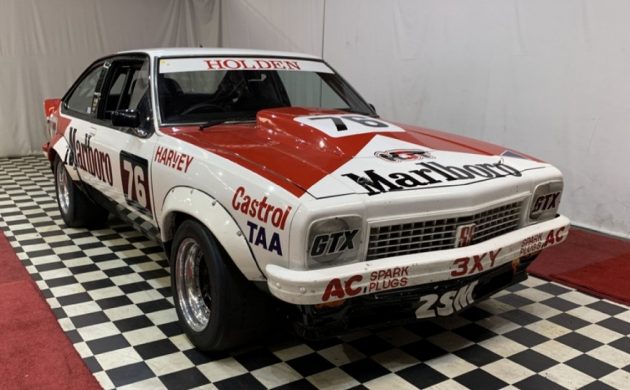
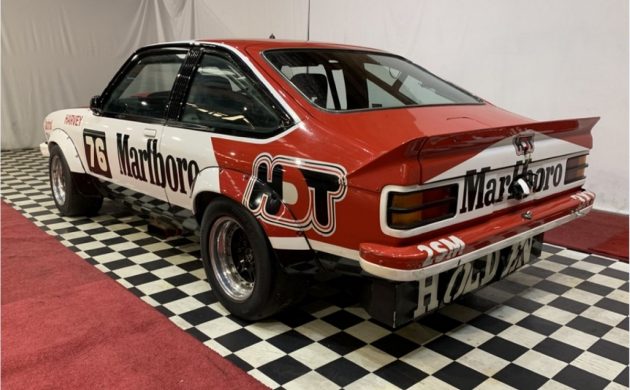
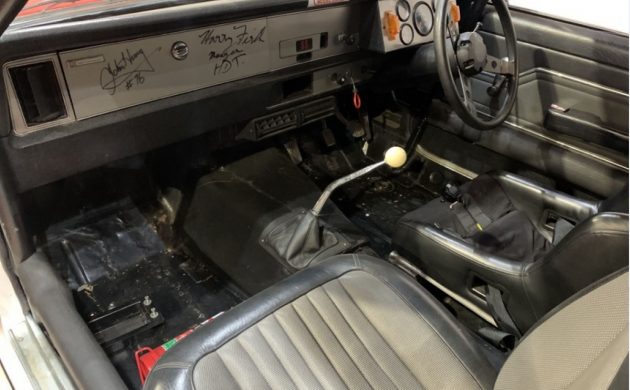
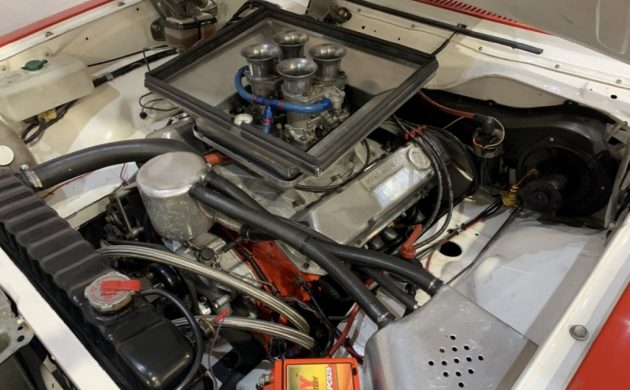
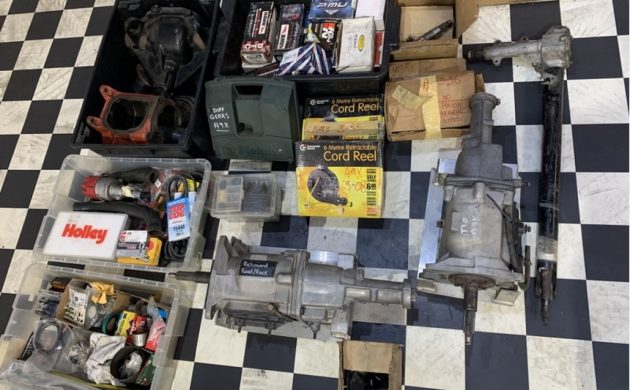
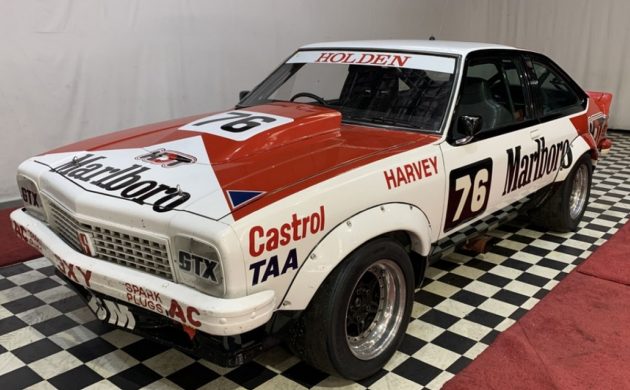


Let me dig around in my couch cushions and see if I can afford this
Check your car’s ashtray and the junk drawer while you’re at it.
Hang on…I have some change in my socks…
Great write up Adam. Lots of information and history. I am sure “The Fox” never dreamed that a car like this might command a seven figure price.
I just sold mine last week.
Bidding is up to $820K now. But I would point out that these are Australian dollars which trade at 1.35 to the US dollar. That brings the price down to a little over 600K. US dollars. That makes it much more affordable.
MikeH,
Thanks for that info, now that I know the value in US dollars I’m off by a mere 600K….
When you flush a toilet “down under” the water swirls in the opposite rotation. Makes no difference if the water is full of 1000 dollar bills or not. Morley
DARN! I just put a deposit on a Yugo,
so I can’t afford this now.
angliagt ,
You have 10day buyers remorse on the Yugo…don’t let this chance pass you buy and get this gem for only 600K US!
For a USA guy I find these very interesting indeed and muscle cars from down under, if any one actually used that phrase at the time, are fresh to me. Like the Ford Falcons from the seventies that were used in Mad Max I had no clue what those police cars were in 1980 as a 14 year old.
I’m not familiar with that Australian 308 inch V8 at all, is it related at all to the small block Chevy or another GM V8 from the states? Sounds potent,,, like the car and hope it gets driven a few times.
“…General Motors took the decision earlier this year to “retire” the Holden name and badge. By the time the calendar turns over the New Year, Holden will no longer exist. It will be a sad end for a brand that has been steeped in motorsport history…” didn’t all co.s leave (toy, ford, etc)? Is Oz switchin to EV car production only? Wass sup wid dat? “Inquiring minds want to know”.
Only driven on Sundays.
Morley, sorry but after reading that comment I cannot sleep at night.
Where did you do the test with the 1000 dollar bills?
Morley, the reason I am asking, if you did the money toilet flush test, you could have done it in a Southern Hemisphere country called Zimbabwe.
Their 370 000 dollars equals one $ US.
Gives a new meaning when your wife uses the toilet flushing comment on the price of your latest classic Mustang and you comment on the price of her new shoes.
Ok, time for my meds……
The 308 c.i. was a Holden motor, but sold in South Africa badged as Chevrolet. My dad had one around 1972.
225 HP sounds about right, as he also had a Ford Ranchero with a 302 in it, at the same time, which seemed as potent.
Sadly my dad suffered a heart attack one Sunday while driving the 308, and passed away.
Strangely, the car did not crash, but pulled across to the kerb and stopped. Right in front of a medical nurse walking on the pavement!
So they must be good cars ?
As an Aussie petrolhead, I made the pilgrimage to Bathurst several times in the 70s and 80s but I never imagined that these cars would be fetching these crazy prices.
wardww, if we did we’d have a stack of these in our backyards and Gumtree would be full of them for sale.